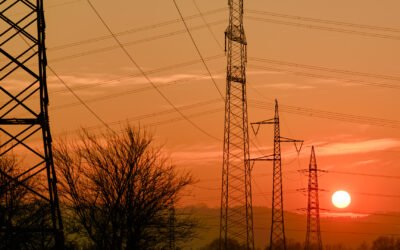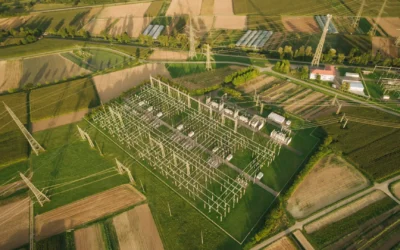• Europe is pushing to become the world’s very first climate-neutral continent by 2050, which is in line with the international commitments made by them.
• Under the 2 GW Program, TenneT will build at least 14 HVDC offshore grid connection systems with a transmission capacity of 2 GW each in the Dutch and German North Sea by 2031.
• As per the estimates of PTR, in order to achieve the target of 300 GW of offshore wind energy capacity by 2050, the installation of HVDC systems will have to increase by three-fold compared to the present.
Europe is pushing to become the world’s very first climate-neutral continent by 2050, which is in line with the international commitments made by them. So, in order to achieve this, the region has set ambitious targets to deploy renewable energy and electrify the transportation sector, which will also reduce dependence on Russian fossil fuels. Europe has deployed significant renewable energy capacity, specifically solar and offshore wind generation capacity, and is well on its way to achieving a renewable energy share of 32% by 2030.
It is noteworthy that given the geographical edge, the region is better positioned to leverage offshore wind energy technology to meet renewable energy adoption targets. The European Union has also recognized the potential for the deployment of offshore wind generation capacity, which has resulted in the formulation of a strategy with specific targets. The strategy has set a target for an offshore wind generation capacity of 60 GW by 2030, followed by a target of 300 GW by 2050, indicating a long-term vision to tap offshore wind energy potential. Deployment of significant offshore wind generation capacity will, in turn, require proportionate transmission capacity as well. This requirement has pushed a leading European transmission system operator to introduce a program, referred to as ‘The 2 GW Program’, which will transmit much-needed green energy to the shore.

Figure 1: Offshore Wind Annual Additions in Europe.
Source: PTR Inc
TenneT’s 2 GW Program
Under the 2 GW Program, TenneT will build at least 14 HVDC offshore grid connection systems with a transmission capacity of 2 GW each in the Dutch and German North Sea by 2031. The 2 GW Program will supply clean electricity to up to 35 million households from the North Sea. It will also provide an accumulative transmission capacity of 28 GW with 18 GW transmission capacity to be installed by 2030, which constitutes 30% of the EU’s offshore expansion targets. Furthermore, through a higher transmission capacity per system, the environmental impact will also be reduced by up to 50%.

Figure 2: Contribution of ‘The 2 GW Program’ in Europe’s Target by 2031.
Source: PTR Inc
TenneT has awarded contracts worth USD 25 billion to a range of contractors, including Hitachi and Petrofac (for six Dutch projects to be connected in Borssele, Eemshaven, and Geertruidenberg/Moerdijk, along with the German connection in Rastede), GE and Sembcorp Marine Offshore Platforms (¬for three Dutch projects to be connected in Maasvlakte, Rotterdam) and GE and McDermott (for German projects in Unterweser)¬. The capacity and reliability of these HVDC systems rely on their power electronics which is discussed in detail in the following sub-section.
Power electronics in the HVDC systems
The transmission capacity of each project has increased radically from 0.8 GW to 2 GW, which means fewer offshore installations to achieve a targeted capacity of 28 GW. It would have required 35 HVDC projects to achieve the targeted capacity if the transmission capacity of each HVDC project remained at 0.8 GW. This, in turn, would have led to additional cost, time, and greater environmental impact.
But despite the significant increase in the transmission capacity of each HVDC project, no major changes in the power electronics of the HVDC systems were observed. The 2 GW HVDC VSC systems still rely on insulated gate bipolar transistor (IGBT) technology with a modular multilevel converter (MMC) referred to as a press pack IGBT module. Each IGBT module selected for this project can sustain a maximum voltage of 6.5 kV instead of an IGBT module that can sustain voltages beyond 10 kV. Reliability concerns and control-related issues linked with higher capacity IGBTs have pushed the developer to opt for IGBT modules with lower capacity.

Figure 3: Collaboration of contractors in the 2 GW Program.
Source: PTR Inc
Looking Ahead
As per the estimates of PTR, annual additions in the offshore wind energy capacity of Europe will increase with a significant CAGR of 29% from 2022-2031. This, in turn, will require the region to deploy proportionate transmission capacity (HVDC in this case) in order to transmit electricity from offshore to land. In response to the requirement, TenneT has come up with ‘The GW Program,’ which is expected to play a crucial role in helping Europe achieve ambitious offshore wind targets by 2030. The contribution of TenneT’s 2 GW Program towards the region’s offshore wind energy target will be around 32% by 2031. As per the estimates of PTR, in order to achieve the target of 300 GW of offshore wind energy capacity by 2050, the installation of HVDC systems will have to increase by three-fold compared to the present.
High Voltage Direct Current Service Overview
The research presented in this article is from PTR's High Voltage Direct Current service. For information about this service please submit a request shown below.
Contact Sales:
Europe
+49-89-12250950
Americas
+1 408-604-0522
Japan
+81-80-7808-1378
GCC/Rest of APAC
+971-58-1602441
More about our:
High Voltage Direct Current Market Research
Recent Insights
US Elections: Consequences of a Second Trump Presidency for Energy Sector
The US is making strides to move away from fossil fuels and eventually decarbonize the energy sector. The White House aims to achieve 80% renewable...
Sustainability Across Sectors: Highlights from GreenTech Festival 2024
Recently, I had the privilege to attend and present at the Greentech Festival, an excellent event in the realm of sustainability. This influential...
HVDC as the Backbone of Offshore Wind Expansion in the North Sea
This infographic discusses how the expansion of offshore wind in the North Sea will drive the HVDC market in Europe.HVDC as the Backbone of Offshore...


